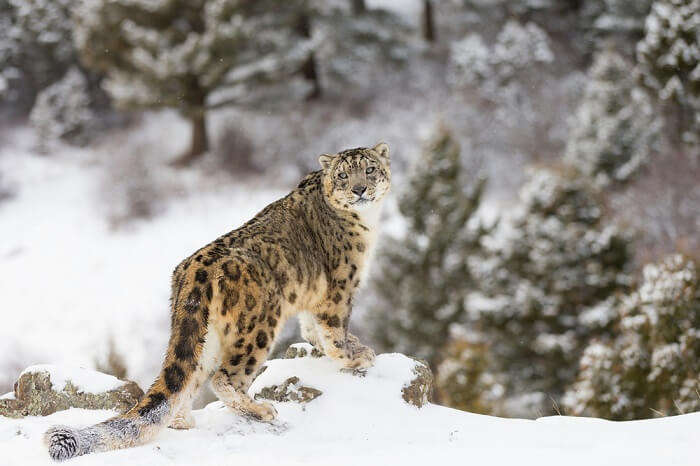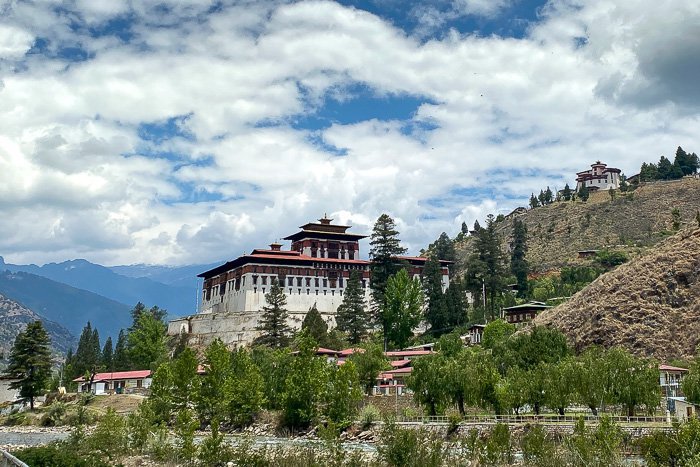12 Most Popular Sightseeing Places in Bhutan

Certainly! Bhutan, known as the Land of the Thunder Dragon, is rich in culture, spirituality, and natural beauty. Here are 12 popular sightseeing places in Bhutan:
Tiger’s Nest Monastery (Paro Taktsang):

The Tiger’s Nest Monastery, also known as Paro Taktsang, is one of Bhutan’s most iconic landmarks and a sacred Buddhist site. Perched on a cliffside in the Paro Valley, the monastery is located about 10 kilometers (6.2 miles) north of Paro town in Bhutan.
Paro Taktsang is a significant pilgrimage site for Buddhists and holds great cultural and religious importance in Bhutanese society. Legend has it that Guru Rinpoche (also known as Padmasambhava), the founder of Tibetan Buddhism, flew to this location on the back of a tigress in the 8th century to meditate in a cave.
Punakha Dzong:

Punakha Dzong, also known as Pungtang Dechen Photrang Dzong, is one of the most beautiful and significant fortresses in Bhutan. Located at the confluence of the Pho Chhu (father) and Mo Chhu (mother) rivers in the Punakha Valley, it served as the religious and administrative center of the Punakha district and was the second dzong (fortress) to be built in Bhutan.
Built in 1637 by Ngawang Namgyal, the unifier of Bhutan as a nation-state, Punakha Dzong holds great historical and cultural importance. It has played a crucial role in the country’s history, serving as the winter residence of the central monastic body and the Je Khenpo (the chief abbot) until the 1950s.
Thimphu:

Dochula Pass:

Dochula Pass is a scenic mountain pass located on the road from Thimphu to Punakha in the Kingdom of Bhutan. Situated at an altitude of approximately 3,100 meters (10,200 feet) above sea level, Dochula Pass offers breathtaking panoramic views of the Himalayan mountain range on clear days.
Phobjikha Valley:

Phobjikha Valley, also known as Gangteng Valley, is a stunning glacial valley located in the Wangdue Phodrang District of central Bhutan. This valley is renowned for its natural beauty, biodiversity, and cultural significance.
One of the prominent features of Phobjikha Valley is the Gangteng Monastery, also known as Gangtey Gonpa, which sits atop a hill overlooking the valley. This monastery, belonging to the Nyingma school of Tibetan Buddhism, plays a crucial role in preserving Bhutanese culture and traditions.
Bumthang Valley:

The Bumthang Valley, also known as the “Switzerland of Bhutan,” is a picturesque region located in the central part of Bhutan. It comprises four main valleys—Chokhor, Tang, Ura, and Chhume—and is renowned for its stunning natural beauty, rich cultural heritage, and religious significance.
Haa Valley:

The Haa Valley, often referred to as the “Hidden Paradise of Bhutan,” is a picturesque valley located in the western part of Bhutan. Despite its proximity to the popular tourist destinations of Paro and Thimphu, the Haa Valley remained closed to tourists until 2002, preserving its pristine beauty and traditional way of life.
Surrounded by majestic mountains, the Haa Valley offers breathtaking views and a serene atmosphere. The valley is dotted with charming traditional Bhutanese villages, lush green fields, and sacred monasteries, making it a haven for nature lovers and cultural enthusiasts.
Trongsa Dzong:

Trongsa Dzong is one of the most significant and majestic dzongs (fortresses) in Bhutan, situated in the central part of the country. It holds both historical and strategic importance, as it was the seat of power for the Wangchuck dynasty before they became the rulers of unified Bhutan.
Perched dramatically on a ridge overlooking the Mangde River, Trongsa Dzong commands a strategic position, controlling the east-west trade routes of Bhutan. Its strategic location played a crucial role in the unification of Bhutan under the leadership of Zhabdrung Ngawang Namgyal in the 17th century.
Jigme Dorji National Park:

Jigme Dorji National Park is the largest national park in Bhutan, covering an area of approximately 4,349 square kilometers (1,678 square miles) in the northwestern part of the country. Named after Jigme Dorji Wangchuck, the third king of Bhutan, it is situated in the districts of Gasa, Thimphu, Paro, and Punakha.
Rinpung Dzong (Paro Dzong):

Chimi Lhakhang:

Chimi Lhakhang, also known as the Fertility Temple, is a renowned Buddhist monastery located in the Punakha district of Bhutan. It holds a special significance as a pilgrimage site dedicated to the 15th-century saint, Drukpa Kunley, who is popularly known as the “Divine Madman” for his unorthodox teachings and unconventional methods of spreading Buddhism.
A fertility temple dedicated to the Divine Madman, Lama Drukpa Kunley, known for its phallic symbols and blessings for couples seeking children.
These are just a few of the many captivating sights that Bhutan has to offer, each reflecting the country’s rich heritage, natural splendor, and spiritual essence.
There are no reviews yet. Be the first one to write one.














